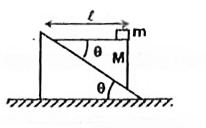Text Solution
Verified by Experts
|
Topper's Solved these Questions
LAWS OF MOTION
FIITJEE|Exercise SOLVED PROBLEMS (SUBJECTIVE)|11 VideosView PlaylistLAWS OF MOTION
FIITJEE|Exercise SOLVED PROBLEMS (OBJECTIVE)|17 VideosView PlaylistKINEMATICS
FIITJEE|Exercise NUMERICAL BASED QUESTIONS DECIMAL TYPE|5 VideosView PlaylistMAGNETIC
FIITJEE|Exercise Numerical Based Type|2 VideosView Playlist
Similar Questions
Explore conceptually related problems
Knowledge Check
A
B
C
D
Submit
A
B
C
D
Submit
A
B
C
D
Submit
Similar Questions
Explore conceptually related problems

